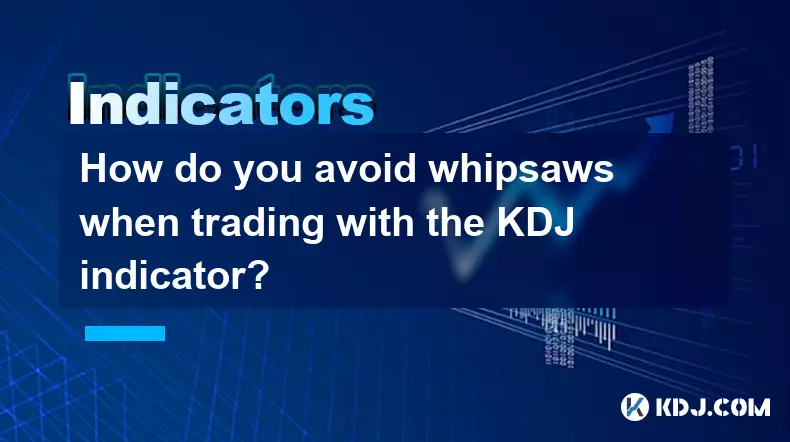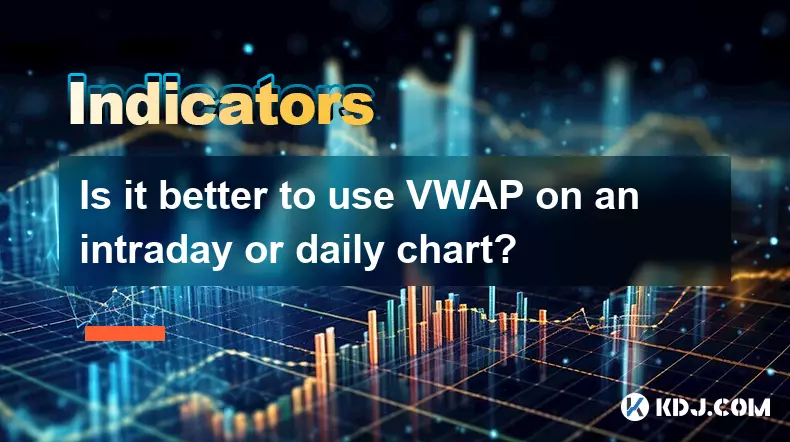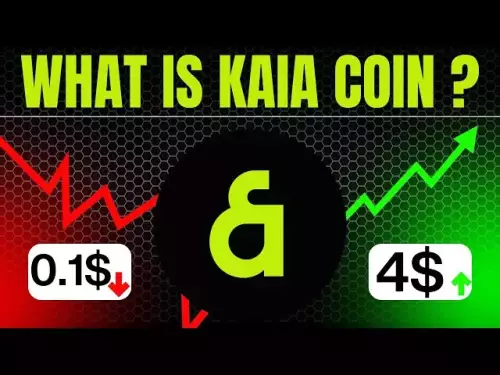-
 bitcoin
bitcoin $112715.707551 USD
-1.71% -
 ethereum
ethereum $4101.475385 USD
-3.01% -
 tether
tether $1.000644 USD
-0.02% -
 bnb
bnb $1207.619465 USD
-6.77% -
 xrp
xrp $2.501451 USD
-3.98% -
 solana
solana $202.947124 USD
-3.32% -
 usd-coin
usd-coin $1.000295 USD
0.04% -
 dogecoin
dogecoin $0.203884 USD
-4.47% -
 tron
tron $0.317154 USD
-1.72% -
 cardano
cardano $0.695009 USD
-4.43% -
 hyperliquid
hyperliquid $38.853961 USD
-8.23% -
 chainlink
chainlink $18.988674 USD
-4.64% -
 ethena-usde
ethena-usde $1.000233 USD
-0.03% -
 stellar
stellar $0.337050 USD
-3.63% -
 bitcoin-cash
bitcoin-cash $536.861728 USD
-1.28%
How do you avoid whipsaws when trading with the KDJ indicator?
Whipsaws in KDJ trading stem from false crossovers in volatile or sideways markets, often leading to premature entries—contextual confirmation is key.
Oct 11, 2025 at 11:37 am

Understanding Whipsaws in KDJ-Based Trading
1. Whipsaws occur when the KDJ indicator generates false signals due to sudden price reversals in volatile markets. These misleading crossovers between the %K and %D lines can trigger premature entries or exits, especially during sideways or low-trend conditions.
2. The KDJ indicator, derived from stochastic principles, is highly sensitive to short-term price movements. This sensitivity increases the likelihood of rapid signal changes that do not reflect sustained momentum, leading traders into choppy zones where profits are quickly erased.
3. Markets with low volume or narrow trading ranges amplify the risk of whipsaws. In such environments, minor price fluctuations can push the %K line above or below the %D line, creating what appears to be a valid signal but results in immediate reversal.
4. Traders relying solely on KDJ crossovers without contextual confirmation often fall victim to repeated losses. The absence of trend filters or volatility assessments leaves strategies exposed to noise rather than meaningful directional movement.
5. Recognizing the conditions under which whipsaws thrive—such as consolidation phases and news-driven volatility—is essential for adjusting position sizing and entry thresholds accordingly.
Integrating Confirmation Tools with KDJ Signals
1. Combining the KDJ with moving averages helps distinguish between genuine breakouts and false moves. When the price is above a key moving average like the 50-period EMA, bullish KDJ crossovers carry more weight, reducing impulsive long entries in downtrends.
2. Using RSI alongside KDJ provides divergence validation. If the KDJ shows a bullish crossover but the RSI remains in oversold territory without forming a bullish divergence, the signal may lack follow-through strength.
3. Volume analysis acts as a filter for KDJ signals. A crossover accompanied by a significant increase in trading volume suggests institutional participation, increasing the probability that the move will sustain.
4. Incorporating candlestick patterns at critical support or resistance levels adds confluence. For example, a bullish engulfing pattern aligning with an oversold KDJ crossover improves the risk-reward profile of the trade.
5. Price action structures such as higher lows or breakout retests offer additional layers of validation. Waiting for price to confirm the direction before acting on a KDJ signal reduces exposure to erratic swings.
Adjusting KDJ Parameters for Market Conditions
1. Default KDJ settings (9,3,3) may be too reactive for crypto assets known for extreme volatility. Increasing the period length smooths the %K and %D lines, lowering the frequency of false triggers.
2. In high-frequency trading environments, using a longer lookback period like 14 or 21 prevents overfitting to micro-movements. This adjustment makes the indicator less prone to reacting to transient spikes.
3. Modifying the smoothing factor for the %D line from 3 to 5 enhances signal reliability. A slower %D line reduces the number of crossovers, ensuring only stronger momentum shifts generate alerts.
4. Adapting parameters based on volatility regimes—tighter settings in trending markets, broader ones in ranging markets—allows traders to maintain responsiveness without sacrificing accuracy.
5. Backtesting different configurations across various market cycles reveals optimal setups for specific coins or timeframes, helping tailor the indicator to real-world behavior instead of theoretical ideals.
Frequently Asked Questions
What timeframe minimizes KDJ whipsaws in cryptocurrency trading?Higher timeframes such as the 4-hour or daily charts reduce noise and improve signal quality. Shorter intervals like the 5-minute chart produce excessive crossovers that often reverse within minutes.
Can divergence detection prevent false KDJ signals?Yes, bearish price highs with lower %K peaks indicate weakening momentum, warning against new long positions. Similarly, bullish divergence during downtrends highlights potential reversals before KDJ crossovers appear.
Should stop-loss orders be adjusted when using KDJ?Stop levels should account for recent volatility, placing them beyond recent swing points rather than fixed percentages. This approach prevents being stopped out by normal fluctuation after a valid KDJ signal.
Is the J-line useful in avoiding misleading crossovers?The J-line, representing triple-smoothed momentum, can identify overextended conditions. Readings above 100 or below 0 suggest exhaustion, cautioning traders against chasing entries even if %K crosses %D.
Disclaimer:info@kdj.com
The information provided is not trading advice. kdj.com does not assume any responsibility for any investments made based on the information provided in this article. Cryptocurrencies are highly volatile and it is highly recommended that you invest with caution after thorough research!
If you believe that the content used on this website infringes your copyright, please contact us immediately (info@kdj.com) and we will delete it promptly.
- Coinbase and CoinDCX: Navigating the Crypto Exchange Landscape in 2025
- 2025-10-15 13:05:16
- Elon Musk, Dogecoin, and the Elusive Rally: What's the Deal?
- 2025-10-15 12:25:13
- Jamaica, ILO Principles, and Labour Commitment: Navigating a Changing World
- 2025-10-15 13:05:16
- Xbox One Controller Stick Drift: Causes, Fixes, and Prevention
- 2025-10-15 13:10:02
- GROK999K: The AI-Powered Crypto Revolutionizing Blockchain Intelligence
- 2025-10-15 13:10:02
- BTC, ETH, and Crypto Presales: Navigating the Storm with MoonBull & LivLive
- 2025-10-15 11:05:13
Related knowledge

What's the main difference between VWAP and TWAP?
Oct 12,2025 at 11:54am
Understanding VWAP and Its Role in Crypto Trading1. Volume Weighted Average Price (VWAP) is a trading benchmark that calculates the average price of a...

How do you identify exhaustion moves using VWAP and its bands?
Oct 12,2025 at 08:00am
Understanding the Role of Decentralized Exchanges in Crypto Trading1. Decentralized exchanges (DEXs) operate without a central authority, allowing use...

Is it better to use VWAP on an intraday or daily chart?
Oct 15,2025 at 02:01am
Intraday Trading and the Role of VWAP1. Intraday traders frequently rely on VWAP (Volume Weighted Average Price) as a dynamic benchmark for assessing ...

How do you use VWAP to scale in and out of positions?
Oct 14,2025 at 02:19am
Understanding VWAP as a Dynamic Benchmark1. The Volume Weighted Average Price (VWAP) is not just an indicator—it functions as a dynamic benchmark that...

What are the main advantages of using VWAP over EMA?
Oct 11,2025 at 02:18am
Main Advantages of Using VWAP Over EMA1. Volume-Weighted Average Price (VWAP) incorporates trading volume into its calculation, offering a more accura...

How do you use VWAP on different chart types like Heikin Ashi?
Oct 11,2025 at 05:01pm
Understanding VWAP in the Context of Heikin Ashi Charts1. The Volume Weighted Average Price (VWAP) is a powerful analytical tool commonly used by trad...

What's the main difference between VWAP and TWAP?
Oct 12,2025 at 11:54am
Understanding VWAP and Its Role in Crypto Trading1. Volume Weighted Average Price (VWAP) is a trading benchmark that calculates the average price of a...

How do you identify exhaustion moves using VWAP and its bands?
Oct 12,2025 at 08:00am
Understanding the Role of Decentralized Exchanges in Crypto Trading1. Decentralized exchanges (DEXs) operate without a central authority, allowing use...

Is it better to use VWAP on an intraday or daily chart?
Oct 15,2025 at 02:01am
Intraday Trading and the Role of VWAP1. Intraday traders frequently rely on VWAP (Volume Weighted Average Price) as a dynamic benchmark for assessing ...

How do you use VWAP to scale in and out of positions?
Oct 14,2025 at 02:19am
Understanding VWAP as a Dynamic Benchmark1. The Volume Weighted Average Price (VWAP) is not just an indicator—it functions as a dynamic benchmark that...

What are the main advantages of using VWAP over EMA?
Oct 11,2025 at 02:18am
Main Advantages of Using VWAP Over EMA1. Volume-Weighted Average Price (VWAP) incorporates trading volume into its calculation, offering a more accura...

How do you use VWAP on different chart types like Heikin Ashi?
Oct 11,2025 at 05:01pm
Understanding VWAP in the Context of Heikin Ashi Charts1. The Volume Weighted Average Price (VWAP) is a powerful analytical tool commonly used by trad...
See all articles


























![Staking ATH: How To Stake $ATH in October 2025 with 523% APY — [Step-By-Step Guide] Staking ATH: How To Stake $ATH in October 2025 with 523% APY — [Step-By-Step Guide]](/uploads/2025/10/15/cryptocurrencies-news/videos/staking-ath-stake-ath-october-apy-stepstep-guide/68eef94d80903_image_500_375.webp)















































